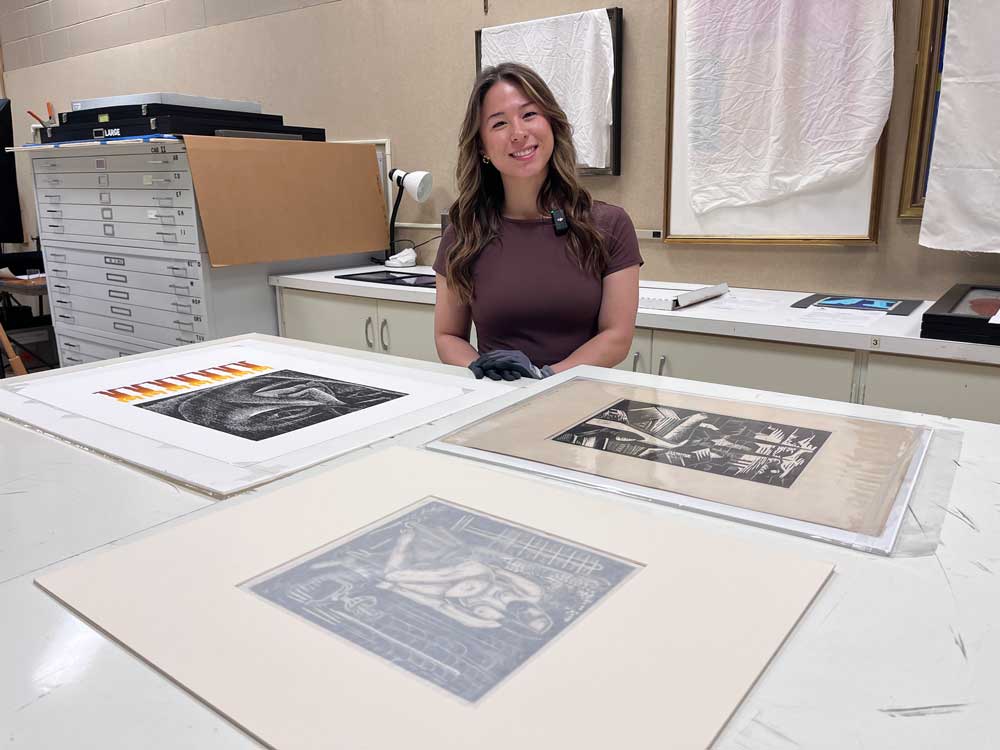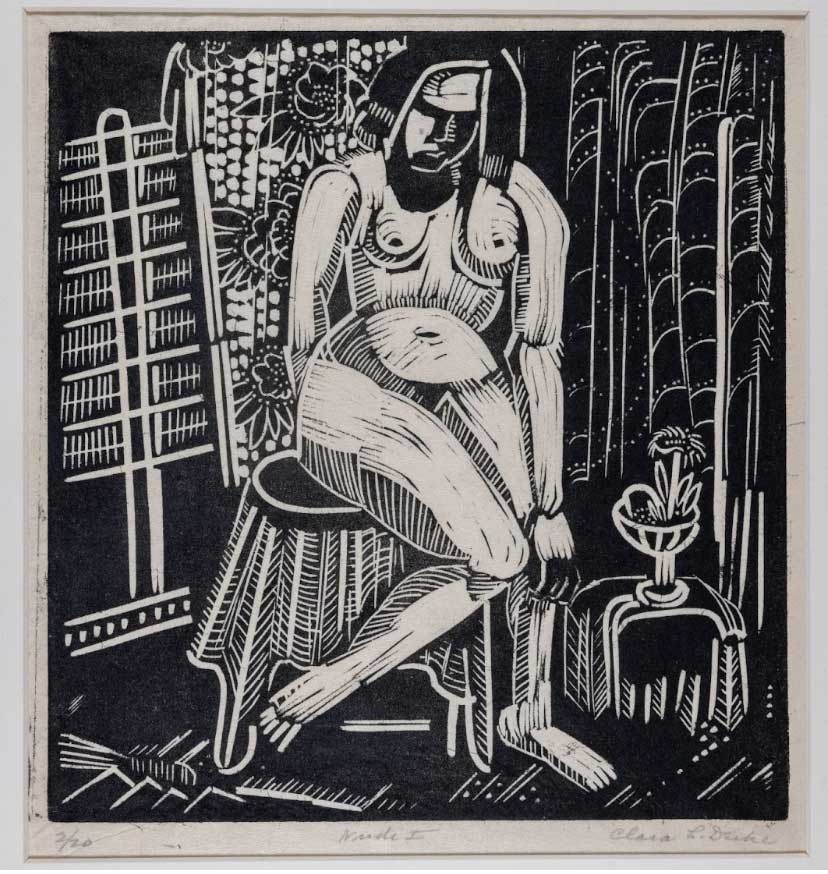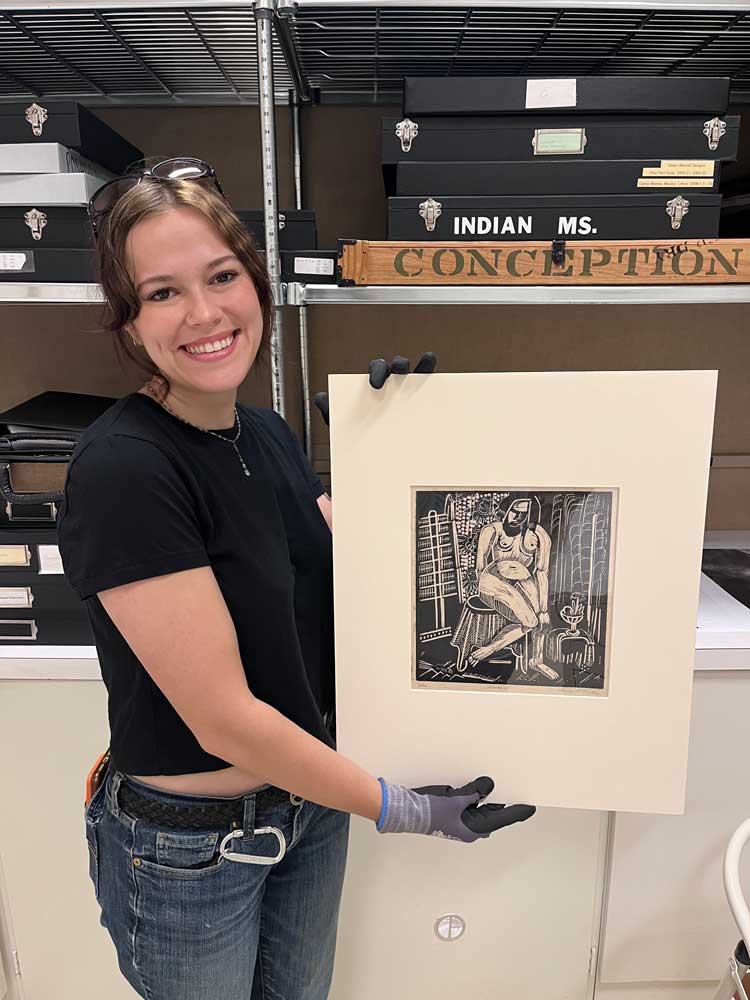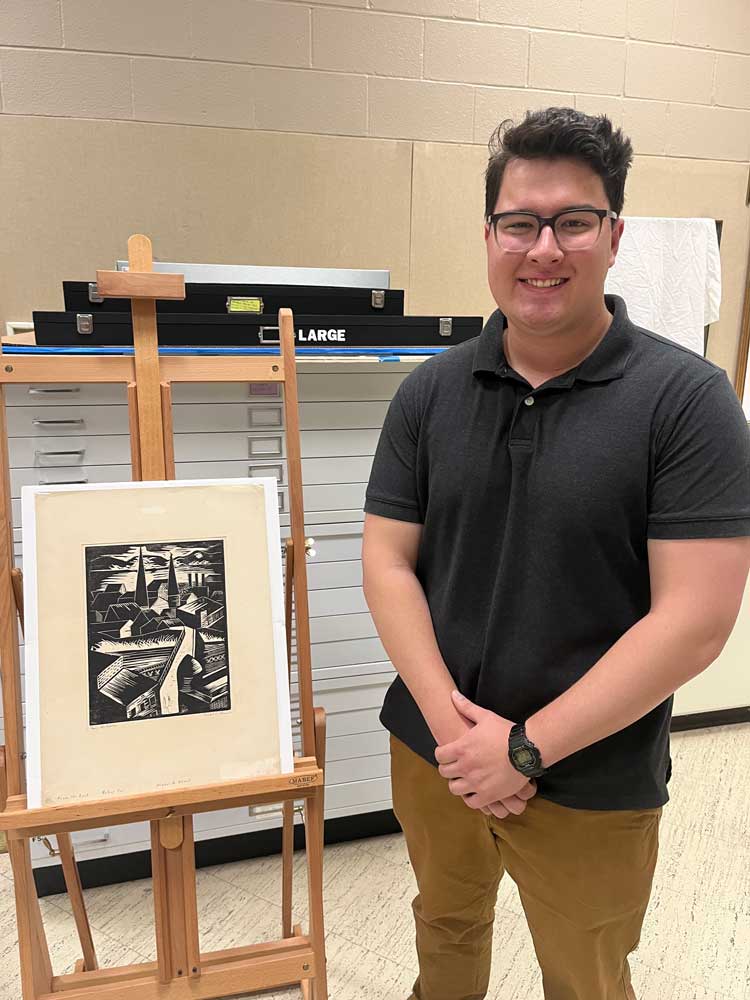The Richard and Carole Cocks Art Museum (RCCAM) at Miami University recently acquired three artworks thanks to successful acquisition proposals presented by students in the Spring 2024 Art and Its Markets class (ART230D). The program is offered by the Department of Art and taught by Laura Stewart, Adjunct Professor of Art and Registrar and Collection Manager at the Taft Museum of Art.
On May 2, RCCAM staff heard from six students, who through a series of proposal presentations at the Art Museum, provided convincing reasons for the museum to select and purchase new artwork for its collections. Over the course of the semester, students applied their humanities research skills to works on loan from Thomas French Fine Art Gallery (Akron, Ohio). Students took into account the art historical value of the work while also considering the Museum’s needs, including its dedication to teaching, commitments to Diversity, Equity, Accessibility, and Inclusion, current collection holdings, various university courses, and programs, as well as future exhibitions that might make use of the artworks. In this respect, the Museum became a laboratory for student inquiry as well as a space for gaining hands-on, pre-professional skills.
After listening to the pitches presented by students, RCCAM Director and Chief Curator, Jack Green, Curator of Exhibitions, Jason E. Shaiman, and Collections Manager and Registrar, Jenn Laqualia, each of whom worked with the class during the semester, selected three proposals for acquisition. The selection of works consisted of three woodcuts, all by women artists.


Millie West argued that Elizabeth Catlett’s woodcut and color linocut, Man (1975) has “a unique and important visual history rooted in the Black Arts Movement and post-Civil Rights America and an artistic style rich in cultural heritage and social commentary.”
Catlett was an African American artist, well known for her sculptures and prints of African American women. This work adds an image of a male portrait to the museum’s collection of works by the artist. West indicated that Man opened up new opportunities for future exhibitions, highlighting Catlett’s identity as a female artist and Civil Rights activist. It features recurring motifs in Catlett’s art, joining three other modernist works by Catlett in the museum’s collection, including the bronze Glory.


Josephine Durst presented the proposal for Clara L. Deike’s Nude I, viewed as an “extremely rare modernist woodcut” by the artist. Created while studying under Hans Hoffman in Munich, Germany, this piece represents an intimate stage of a woman artist’s career at a time in which she fought against systemic and interpersonal barriers. Deike, who is better known for her paintings, was a founding member of the Women’s Art Club of Cleveland. She broke down boundaries and created a body of original modernist works in a style practiced and mastered by only a handful of Cleveland-based artists. This is the first work by Deike to join RCCAM’s collections.


Kenneth DeCrosta proposed Mable A. Hewit’s From the Roof, a woodcut by another Ohio woman artist not yet represented in RCCAM’s collections. Born in Conneaut, Ohio, and raised in Youngstown, Hewit went on to establish studios in Cleveland and Parma. The Depression-era work presents a semi-industrial urban scene with rooftops, spires, and smokestacks. While devoid of living figures, the woodcut is filled with contrast and perspective. DeCrosta suggested that “art and art history classes would benefit from this print as it is a great visual aid for the printmaking process in general, but it can also be used to facilitate discussions about the Provincetown Printers where Hewit, as a member, learned whiteline woodcut techniques.”
Visit RCCAM’s website for more information about its collections and exhibitions. The Department of Art offers a range of courses focused on Art and Architecture History.
Help RCCAM acquire future works for the collections by considering a gift to the Art Museum’s Orpha Webster Art Fund: http://givetomiamioh.org/artmuseum





